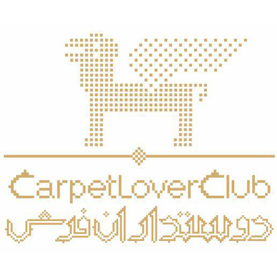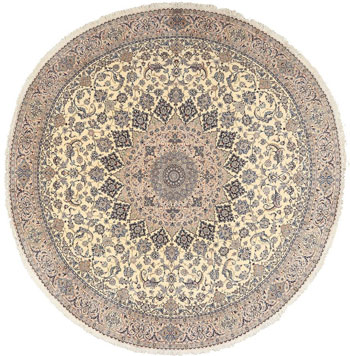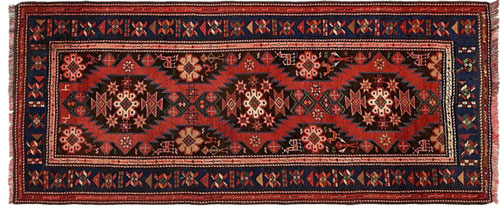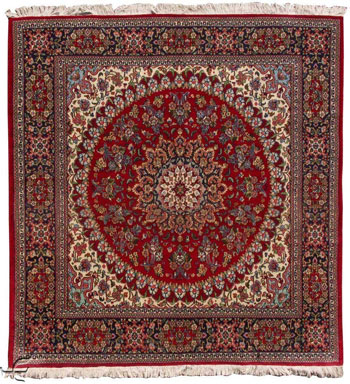
The art of carpet weaving in Iran originated more than 2,500 years ago. Persian carpets and rugs were initially woven as articles of necessity to cover the floors of nomadic tribesmen, giving them protection from the cold and damp. The natural progression of the skill and craft involved in the creation of these works of art has been passed down from generation to generation over the centuries throughout periods of peace, invasion and war. As international trade developed, the variety of patterns and designs grew.
Size & Shapes of Persian Rugs & Persian Carpets
Size & Shape are kept at the same category. The reason is that Size & Shape have one to one relationships.
Defining the words carpet or rug are always confusing people even the professional one, so it’s necessary to define the overlapping usage of the word carpet and rug at this point.
Usually the word carpet is getting used for machine made textile that cover the entire floor. The word RUG usually used for hand or machine made product that cover portion of the floor.
RUG
Usually the RUG refers to the hand made textile that are around 35 square feet(3.2 square meter).
CARPET
The word carpet refers to lager than 35 square feet(3.2 square meter) in dimension.
Ghaliche
Smaller rug usually have two size: Zaronim [4′ 3″ × 2′ 9″(130 × 80 cm)]
Zarcharak [5′ × 3′(150 × 90 cm)]
Size name and dimensions the way dealer do business. Here is an introduction to some terminology that are using in Carpet and Rug business.
- Very small rugs called “Padari” – “Patakhti” and Poshti (doormat, bedside rug and cushion) : 60 × 80 cm and 90 × 60 cm.
- Small rugs called “Zar” and “Charak” : Approximately 80 × 130 cm.
- Medium – sized rugs called “Sajadeh” (prayer rug) or “Dozar’ie”: Approximately 140 × 220 cm and 200 × 140 cm.
- Large rugs called “Pardeh;ie” (drape): Approximately 150 × 250 cm and 170 × 280 cm.
- Small carpets : Approximately 200 × 300 cm and 250 × 350 cm and similar measurements.
- Medium-sized carpets : Approximately 270 × 370 cm and 300 × 400 cm and similar sizes.
- Large carpets with approximate sizes of 360 × 430 cm, 350 × 460 cm and similar sizes.
- Very big carpets with approximate sizes of 400 × 500, 450 × 600 and similar measurements.
- Extremely large carpets with an area of 50 to 60 m2 and even larger ones which are woven only by orders. In addition, in Iran two other sizes of carpets are woven as well one of them called side carpet “ Kenareh” in the dimension f 70 to 100 cm in width and 280 to 1600 cm in length and another one referenced as “ Kalegui” with an approximate width of 120 to 180 cm and a length of 380 to 500 cm, usually used to cover wide corridors or on upside or downside of carpets of the hall. Also, another type of side carpet “ Kenareh” is woven in different parts of Iran which is called narrow “Kharak” (bench rug) which has a width of 60 to 8 cm and a length of 150 to 300 cm.
Shapes of rugs
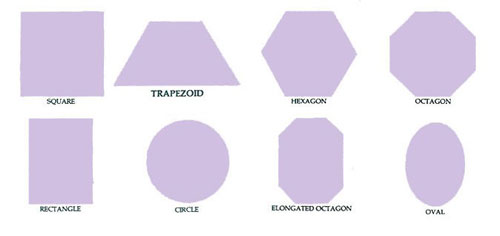
There are fewer varieties about shape compare to size. The most common shapes are rectangular, majority of the known shapes in the market are:
Persian Rug Size Guide Including Rug Size Cheat Sheet
The right area rug size for any room really depends on the size of the room, the furniture you have in the room and finally, the look you wish to achieve.
The Masking Tape Trick To Help You Decide
Some people seem to be able to just look at a room and make up their mind about which size of rug would go best in that space. Others need a more solid visual guide to get a better idea. If you fall into the latter category, here’s a trick that should help. Let’s say you’ve estimated that a 9’×12’ rug would go well in that space. Using masking tape, create an outline on the floor where you are planning on placing the rug. Now stand back and see if that looks like it be a good fit. Too large? Try an 8’×10’ outline and see if that looks better.
Planning on using a round rug in that space? Decide on a diameter and do the same exercise as above. Another way to use the masking tape is to create the outline along the edges of where you want the rug to lie. Stand back and take a look. If you like the way it looks, measure the length and breadth and that’s your right size. It may take some trial and error but in the end you know that the size of rug that you buy will be just perfect! You do not want a rug that is too small or too big for the space so it pays to take the time to get it right.
Rug Size In Relation To Your Furniture
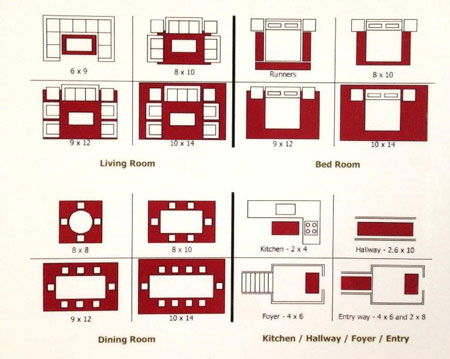
Goes without saying that you have to take into account the furniture in the room when you are trying to determine the right rug size.
So here is a cheat sheet that can help you determine the size of the rug based on your existing furniture.
A few things you should think about for decorating your home

- In the living room, the rug should be large enough so that the sofa sits on it completely or else the furniture will not be steady. If you do not want the sofa set to sit atop your rug, make sure you measure the space accurately so that you can place the sofa around the rug and not on it.
- You have to be very careful while measuring. In this case, it is better to buy smaller rather than larger. Also, you should aim for keeping an equal amount of bare floor space between the furniture and the rug edges on all sides otherwise it will look off-center.
- If you are buying a rug for your dining room, it is always better to buy a rug that is large enough to accommodate the dining table and the chairs when they are pulled out. If the chair legs extend beyond the rug when it is pulled out, when the person sitting on the chair pulls it towards the table the legs will catch on the rug edges. This constant scuffing will cause the rug to look worn and frayed in no time at all.
If you are looking for a rug that’s large enough to fill the entire room, remember that leaving at least 12” between the rug edges and the walls looks much better than buying a rug that covers the entire floor space.

